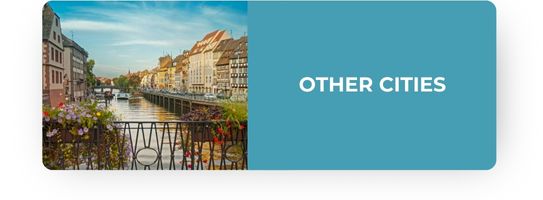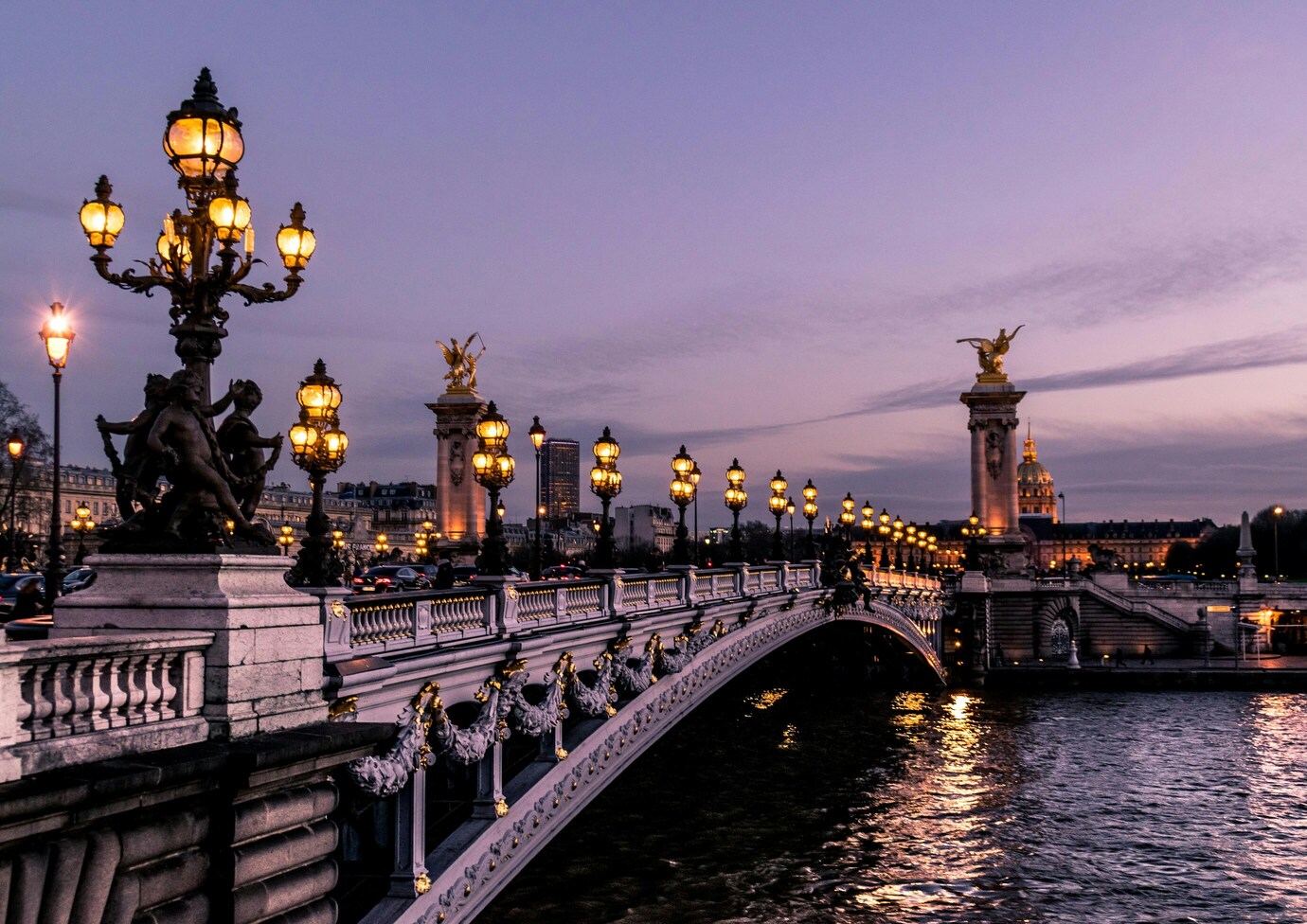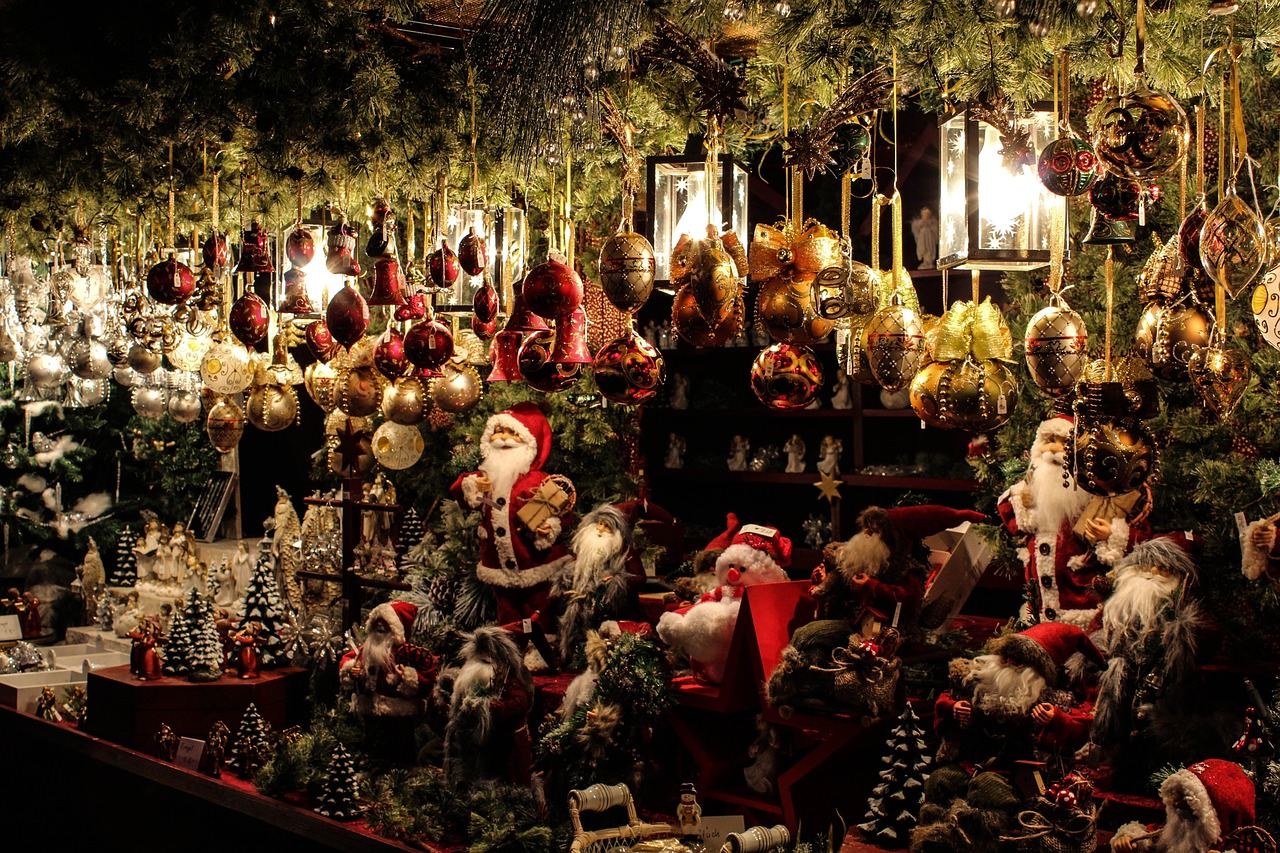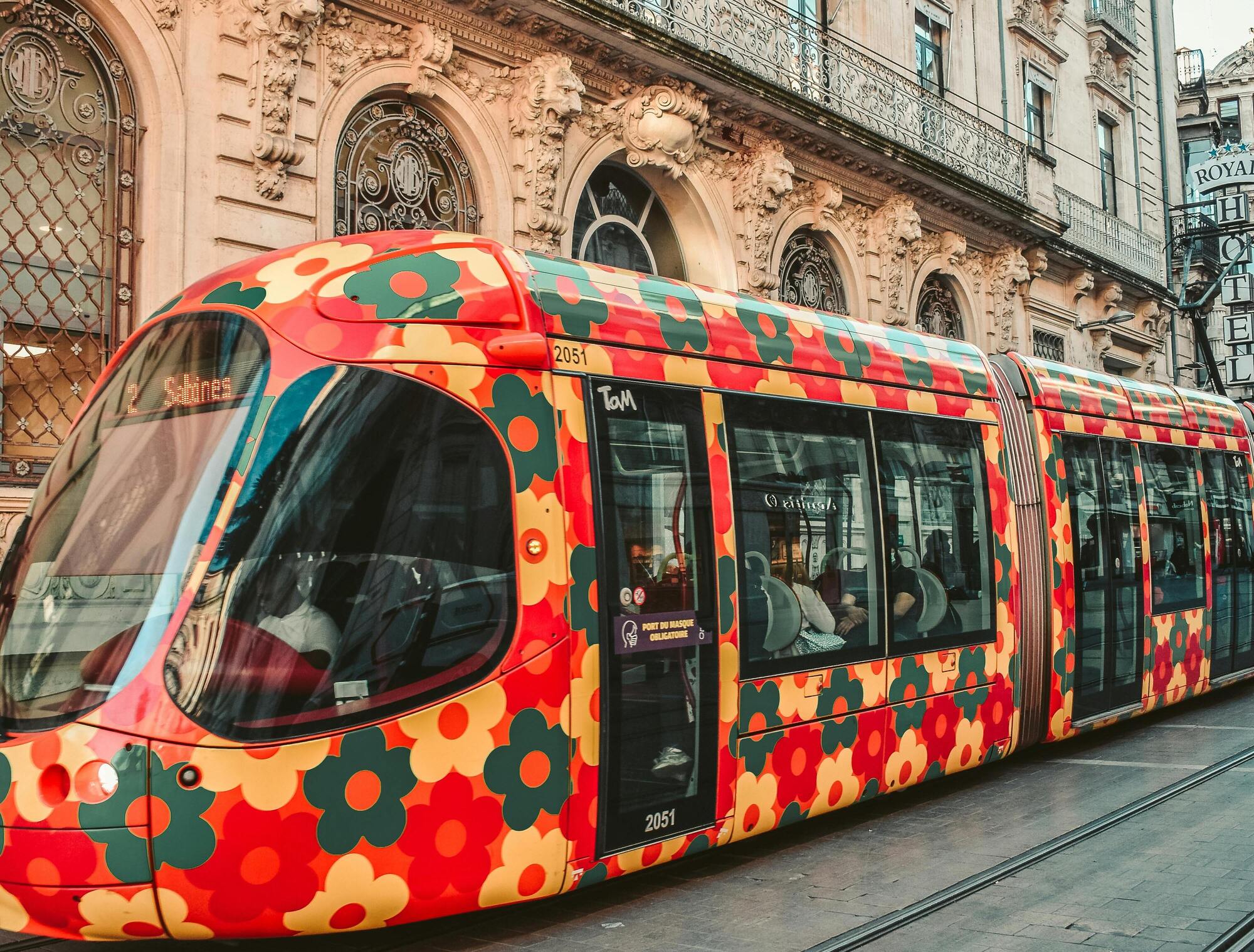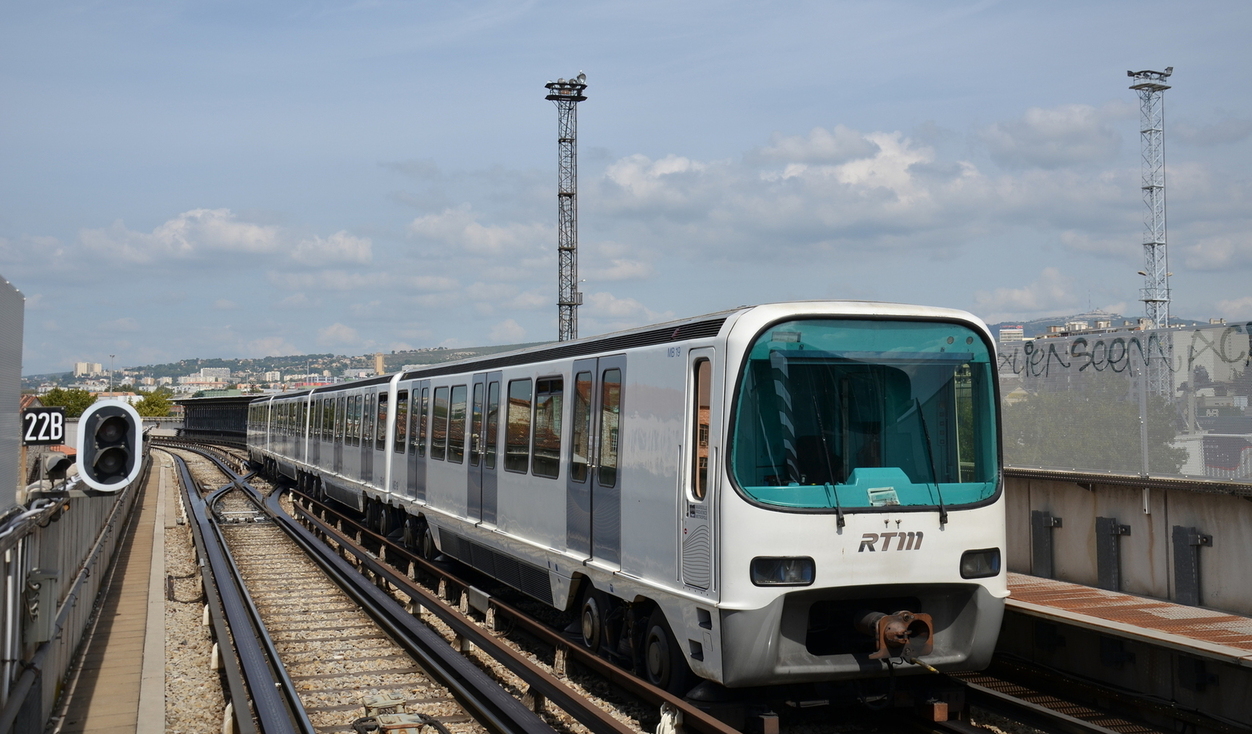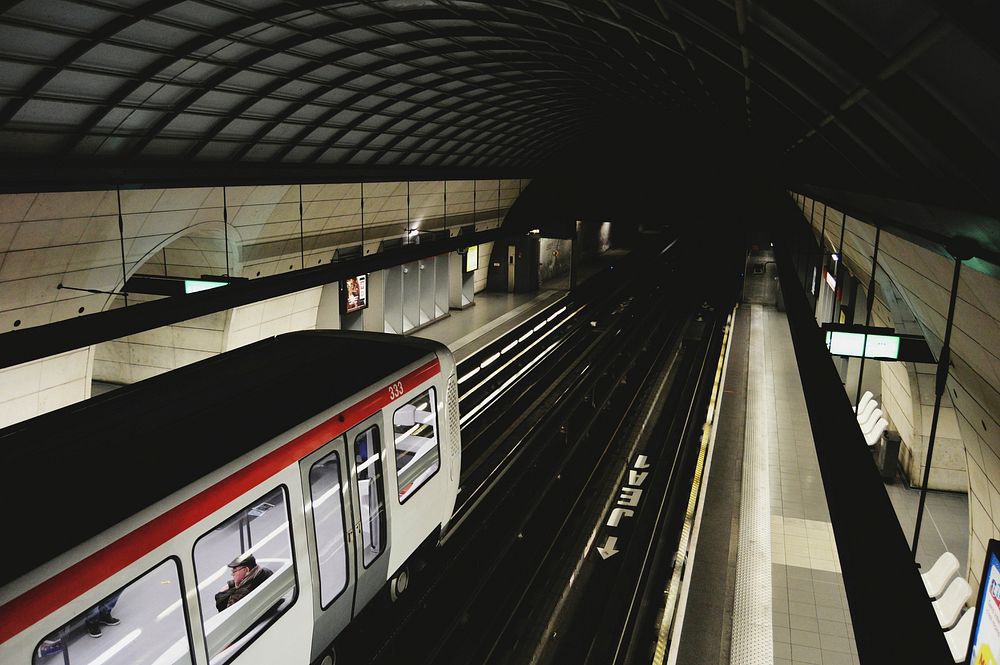Montpellier: 15 places to visit to discover the Occitan city
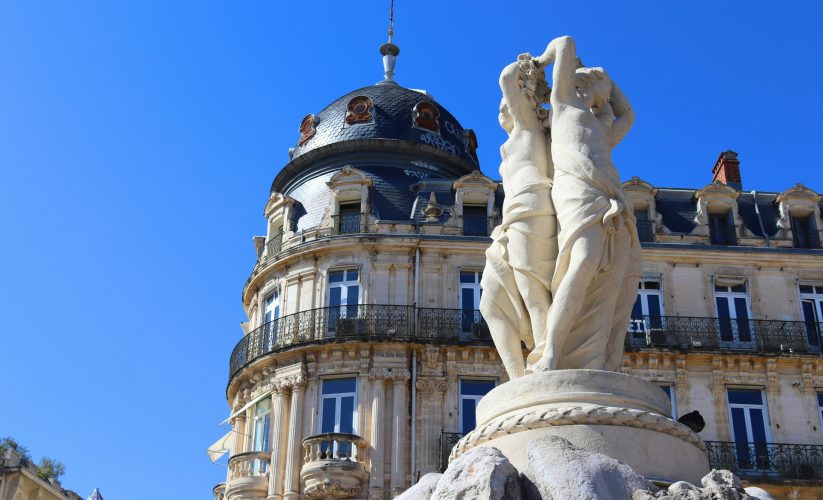
Nestled between the Mediterranean Sea and the Pic Saint-Loup hills, Montpellier is a vibrant city that perfectly embodies the southern French art of living. The second-largest city in Occitanie, it captivates with its historic heritage, elegant architecture, and sunny atmosphere. Here, ancient stone rubs shoulders with contemporary buildings, and medieval lanes open onto lively squares.
Whether you’re a history buff, an art lover, a nature enthusiast, or simply curious, Montpellier has something for everyone. Here are 15 must-see places to visit in Montpellier to discover all its facets.
1. Place de la Comédie: Montpellier’s beating heart
Also named the “place de l’œuf” (egg square) by locals because of its oval shape, Place de la Comédie is Montpellier’s vibrant center. Surrounded by Haussmann-style façades and dominated by the Opéra-Comédie, it concentrates the very essence of the city. This is where everything converges: residents, street performers, students, and travelers.
Grab a seat on a café terrace to soak up the ambiance, stroll over to the Fountain of the Three Graces, or wander into the adjacent lanes of the Écusson, the historic center. Day or night, the Comédie embodies Montpellier’s energy and convivial spirit.
Good to know: the square is entirely pedestrian and easily reached by tram—the city’s signature mode of transport.
2. Saint-Pierre Cathedral: an iconic Gothic landmark
No visit to Montpellier is complete without stopping before the majestic Saint-Pierre Cathedral. Built in the 14th century, it impresses with its two massive pillars shaped like inverted cones and its grand Gothic porch. This masterpiece of religious architecture was once the chapel of the Benedictine monastery of Saint-Benoît.
Located in the Faculty of Medicine district—one of the oldest in Europe—the cathedral is surrounded by historic stone buildings that tell the story of Montpellier’s scholarly tradition. Inside, the soaring vault and colorful stained glass immerse visitors in a solemn atmosphere.
3. Château de Flaugergues: elegance and heritage
Just a few minutes from the center, Château de Flaugergues offers a peaceful interlude in the heart of the city. This magnificent 17th-century château, listed as a historic monument, is one of the rare Montpellier “folies” still inhabited by the same family for several generations.
Surrounded by formal French gardens and vineyards, it reflects the refinement of the classical era. Visitors can admire period furniture, Aubusson tapestries, and a remarkable art collection. A stroll through the gardens and a tasting of the estate’s wines are the perfect complement to the visit. It’s an ideal family outing that blends nature, heritage, and sensory pleasure.
4. Jardin des Plantes: a haven of peace in the city
Founded in 1593 under Henry IV, Montpellier’s Jardin des Plantes is the oldest botanical garden in France. A true living museum, it hosts more than 2,000 plant species from around the world.
Strollers will find shaded paths, tropical greenhouses, and centuries-old trees. The garden is also a study site for medical and botany students, underscoring the city’s strong bond with scientific knowledge. It’s an ideal spot for a family break away from the bustle of the center.
5. The Faculty of Medicine and the Anatomy Museum
Montpellier is world-renowned for its Faculty of Medicine, the oldest still in operation. Founded in the 12th century, it has trained major figures in French and European medicine.
The guided tour reveals its historic halls, its impressive library, and the Anatomy Museum, home to thousands of intriguing—and sometimes unsettling—specimens. It’s a fascinating place to understand how science has evolved over the centuries, all within a building steeped in history. Tours are available by reservation, offering an experience that’s as cultural as it is scientific.
6. The Triumphal Arch and the Promenade du Peyrou
The Triumphal Arch, inspired by Paris’s Arc de Triomphe du Carrousel, was erected in 1691 in honor of Louis XIV. Located at the entrance to the historic center, it marks the way to the Promenade du Peyrou, one of the finest viewpoints over Montpellier.
From the top, the views of the city, the water tower, and the surrounding hills are spectacular. You can also admire the Saint-Clément Aqueduct, stretching 14 km, which once supplied the city with water. It’s an essential strolling spot—perfect for a romantic break at sunset. The Peyrou, with its plane-tree alleys and equestrian statue of the Sun King, offers an exceptional panorama over the Hérault.
7. The Écusson district: the soul of Montpellier
The Écusson is the city’s historic core—a maze of cobbled medieval lanes lined with mansions, artisan workshops, and cozy cafés. Every street corner tells a story. It’s the perfect neighborhood for a leisurely wander, gazing up at stone façades and stopping by the Laissac covered market to sample local specialties.
Between Rue Foch and Rue de l’Ancien Courrier, you’ll find charming hidden squares. The Écusson concentrates the very essence of Montpellier: lively, authentic, and welcoming.
8. Musée Fabre: art at the city’s core
Considered one of France’s finest museums, the Musée Fabre houses an outstanding collection spanning from the 17th century to contemporary art. Flemish paintings, Neoclassical sculptures, Impressionist masterpieces—each room invites you on a journey through time and color.
Art lovers will be delighted by works from Delacroix, Courbet, and Soulages. The museum regularly hosts high-quality temporary exhibitions as well as workshops for children.
Good to know: the museum is open year-round, and combined tickets with La Panacée (the contemporary art center) are available.
9. Lunaret Zoo and the Amazon Greenhouse
Lunaret Zoo is a true Montpellier institution. Free to enter and spread over more than 80 hectares, it is home to over 1,000 animals representing nearly 140 species. Lions, giraffes, rhinos, and zebras roam in preserved natural habitats.
The adjacent Amazon Greenhouse offers a spectacular immersion in a humid tropical ecosystem. Amid hanging vines, exotic birds, and inquisitive monkeys, the visit amazes young and old alike. It’s a perfect family outing that blends nature, discovery, and awareness of biodiversity. The site is easily accessible by bike or tram.
10. The Lez and Port Marianne: open-air modernity
In contrast to the old town, the Port Marianne district symbolizes contemporary Montpellier. Lined by the River Lez, this area blends futuristic apartment buildings, modern offices, trendy restaurants, and generous green spaces.
Walking or cycling along the riverbanks reveals another side of the city—where architectural innovation meets Mediterranean ease. A highlight is the Arbre Blanc, a bold architectural work by Sou Fujimoto that has become emblematic of Montpellier’s urban renewal. Port Marianne perfectly illustrates the blend of art, design, and quality of life for which Montpellier is renowned.
11. Maguelone Cathedral: between sea and spirituality
A few kilometers from the center, on a peninsula surrounded by lagoons and vineyards, stands the splendid Maguelone Cathedral. Built between the 11th and 13th centuries, it once housed the region’s bishops. Its Romanesque architecture—sober and powerful—impresses with timeless beauty. The site offers sweeping views of the Mediterranean and the lagoons frequented by flamingos.
Reachable on foot, by bike, or by a small tourist train from Villeneuve-lès-Maguelone, this excursion offers a genuine escape—where sea, nature, and history converge.
12. Visit Montpellier and its surrounds: the beaches of Palavas-les-Flots and Villeneuve-lès-Maguelone
Montpellier is lucky to be just 10 kilometers from the coast. Palavas-les-Flots and Villeneuve-lès-Maguelone are among the easiest beaches to reach.
With their long stretches of fine sand, bike paths, and seafront restaurants, these seaside resorts are perfect for a relaxing day out.
In summer, you can try paddleboarding, kitesurfing, or simply enjoy the sunset over the Mediterranean. The beaches are accessible by bus, car, or bike—a great nature escape without leaving the metro area.
13. Pic Saint-Loup: nature and panoramic views
A symbol of the Hérault department, Pic Saint-Loup lies about 20 kilometers north of Montpellier. This emblematic mountain draws hikers, cyclists, and nature lovers.
From its summit—over 650 meters in elevation—the views of the Cévennes and the Mediterranean are breathtaking. You can also explore nearby traditional villages and taste AOC wines produced on its slopes. Pic Saint-Loup is a great family outing that combines activity, discovery, and immersion in the Occitan countryside.
14. Grotte des Demoiselles: an underground gem
About an hour’s drive from Montpellier, the Grotte des Demoiselles is one of southern France’s most spectacular natural wonders. Nicknamed the “Fairies’ Cave,” it comprises vast chambers adorned with millennia-old stalactites and stalagmites. Subtle lighting creates a magical, fairy-tale atmosphere.
Guided tours are available year-round, and the site features a museum space tracing the cave’s geological history. A unique experience—ideal for the curious and for families.
15. Festivals and cultural events in Montpellier
Montpellier is a city brimming with culture. All year long, it hosts numerous artistic, musical, and literary events. Among the most famous: the Festival Radio France Occitanie Montpellier, showcasing classical, electronic, and jazz music; the Comédie du Livre, devoted to literature; and the international dance festival Montpellier Danse.
The city also comes alive in summer with open-air concerts, contemporary exhibitions, and screenings right in the center. These events reflect Montpellier’s creativity and cultural openness.
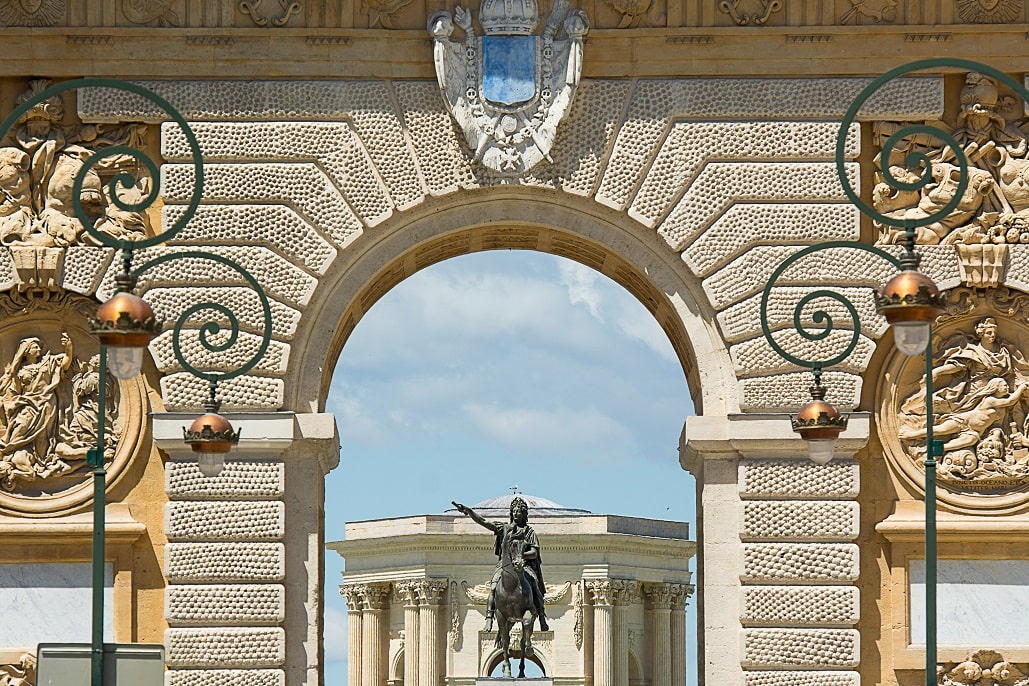
FAQ — Visit Montpellier
When is the best time to visit Montpellier?
Spring and early autumn offer mild weather—perfect for terraces and strolls.
How do I get around easily?
The tram serves most tourist areas, and cycling is an excellent alternative thanks to the many bike paths.
Are guided tours available?
Yes, the tourist office offers several walking, cycling, and bus tours to explore the city.
What are the free things to visit in Montpellier?
Place de la Comédie, the Jardin des Plantes, the Écusson, and Lunaret Zoo are all free to visit.
What can I visit in Montpellier with kids?
Visiting the zoo, strolling through the Jardin des Plantes, discovering the cathedral, or enjoying a day at the beach are all great family-friendly activities.
Conclusion: A city of history, art, and the good life
Visiting Montpellier means discovering a patchwork of neighborhoods, landmarks, and experiences. From Saint-Pierre Cathedral and the Écusson district to the Musée Fabre and the nearby beaches, the city offers a rich blend of culture, nature, and conviviality. Whether you’re an art lover, a history enthusiast, or simply seeking sunshine and relaxation, Montpellier will win you over.
Why not stay a little longer?
Looking for a place to live in Montpellier?
Lodgis offers a wide selection of furnished apartments in Montpellier.
Are you a property owner with a home to rent in Montpellier?
To learn more about our support services, get in touch or visit our dedicated page for letting your property.
Where are the best places to live in Montpellier?
Check out our guide to the favorite neighborhoods.








